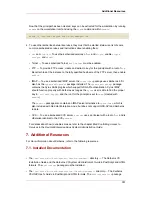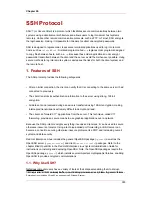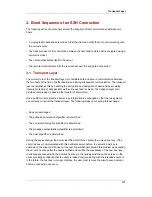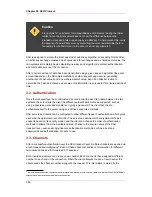
credentials
A temporary set of electronic credentials that verify the identity of a client for a particular
service. Also called a ticket.
credential cache or ticket file
A file which contains the keys for encrypting communications between a user and various
network services. Kerberos 5 supports a framework for using other cache types, such as
shared memory, but files are more thoroughly supported.
crypt hash
A one way hash used to authenticate users. While more secure than unencrypted data, it is
fairly easy to decrypt for an experienced cracker.
GSS-API
The Generic Security Service Application Program Interface (defined in RFC-2743
published by The Internet Engineering Task Force) is a set of functions which provide
security services. This API is used by clients and services to authenticate to each other
without either program having specific knowledge of the underlying mechanism. If a network
service (such as cyrus-IMAP) uses GSS-API, it can authenticate using Kerberos.
hash
A text generated number used to ensure that transmitted data has not been tampered with.
key
Data used when encrypting or decrypting other data. Encrypted data cannot be decrypted
without the proper key or extremely good guessing.
key distribution center (KDC)
A service that issues Kerberos tickets, usually run on the same host as the ticket-granting
server (TGS).
keytab (or key table)
A file that includes an unencrypted list of principals and their keys. Servers retrieve the keys
they need from keytab files instead of using
kinit
. The default keytab file is
/etc/krb5.keytab
. The KDC administration server,
/usr/kerberos/sbin/kadmind
, is the
only service that uses any other file (it uses
/var/kerberos/krb5kdc/kadm5.keytab
).
kinit
The
kinit
command allows a principal who has already logged in to obtain and cache the
initial ticket-granting ticket (TGT). For more information about using the
kinit
command,
refer to its man page.
principal (or principal name)
The principal is the unique name of a user or service allowed to authenticate using
Kerberos. A principal follows the form
root[/instance]@REALM
. For a typical user, the root
is the same as their login ID. The
instance
is optional. If the principal has an instance, it is
separated from the root with a forward slash ("/"). An empty string ("") is considered a valid
instance (which differs from the default
NULL
instance), but using it can be confusing. All
principals in a realm have their own key, which for users is derived from a password or is
Kerberos Terminology
345
Summary of Contents for ENTERPRISE LINUX 4.5.0 -
Page 1: ...Red Hat Enterprise Linux 4 5 0 4 5 0 Reference Guide ISBN N A Publication date ...
Page 2: ...Red Hat Enterprise Linux 4 5 0 ...
Page 4: ...Red Hat Enterprise Linux 4 5 0 ...
Page 24: ...xxiv ...
Page 26: ......
Page 36: ...12 ...
Page 72: ...48 ...
Page 112: ...88 ...
Page 122: ...98 ...
Page 140: ...116 ...
Page 142: ......
Page 300: ...276 ...
Page 318: ...294 ...
Page 320: ......
Page 332: ...308 ...
Page 350: ...326 ...
Page 378: ...354 ...
Page 388: ...364 ...
Page 394: ...370 ...
Page 395: ...Part IV Appendixes ...
Page 396: ......
















































